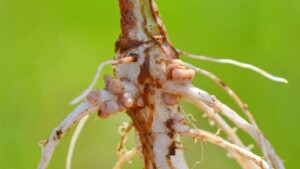By Heather Jennings, PE

How does phosphorus get into our rivers and lakes? I’m glad you asked! Some of the sources are runoff from farm and lawn fertilizers or partial wastewater treatment of raw influent. With the exception of periodic excursion, wastewater treatment plants are typically operating under tight water quality permits with less than 1 mg/L of Total Phosphorus in their discharge permits. This limit is often less than the background phosphorus existing in receiving waters. The permits can be even tighter if the treatment plant discharges to sensitive waters of the U.S. (as defined for the Clean Water Act).
Wastewater treatment plants receive varying sources of wastewater. They are really at the mercy of the community and sometimes the industrial or commercial customers in terms of how much phosphorus they receive daily.
Many operators are looking toward biological and/or chemical and physical solutions to remove phosphorus from effluent. Enhanced biological phosphorus removal (EBPR) is based on developing bacterial populations that have the ability to store 5 to 30 percent of their dry weight in phosphorus. A well-running EBPR system followed by clarification can achieve 0.7 mg/L of effluent phosphorus.
These types of phosphorus-accumulating organisms (PAOs) are unique because although they are aerobic bacteria, they can still consume volatile fatty acids (VFAs) or simple carbons under anaerobic conditions and, when returned to aerobic conditions, take up additional phosphorus in the form of polyphosphate.
Another way of thinking of the process is that it is conditioning bacteria through the anaerobic stage to be prepared to consume additional phosphorus—just like professional eating competitors prepping for the big event day. These bacteria can then be removed from the treatment system in the waste-activated sludge (WAS) or recirculated in the returned-activated sludge (RAS).
As a rule of thumb, the minimum influent BOD:P ratio needs to be 25:1 to be successful, but many systems augment the anaerobic process with VFAs either by side stream fermentation or chemical addition to provide the necessary BOD. If there is not a sufficient carbon source like VFAs during the anaerobic process, the PAOs will not be able to take up additional phosphorus in aerobic conditions.
As with everything else in the universe, PAOs have competitors—especially for VFAs during the anaerobic stage. These bacteria are called glycogen-accumulating organisms (GAOs). GAOs do not contribute to phosphorus removal, and their increase can indicate problems within the EBPR system. Think of GAOs as that one cousin that comes to the family party, eats everything, and leaves before it’s time to clean up. Not a lot of help in general with phosphorus.
There are several process controls that can help PAOs dominate. PAOs prefer higher temperatures than GAOs. PAOs also prefer a pH between 7.25 and 8.0 in the anaerobic process that naturally pre-select against GAOs. There is also a preference for specific VFAs, such as propionic acid over acetic acid, in the anaerobic process that can be used to push the microbial population toward PAOs.
Although there are a lot of conditions to meet EBPR needs, to be successful it is possible to retrofit systems to meet their needs while providing a biological treatment option for phosphorus. It certainly warrants looking into when dealing with phosphorus removal!
Related Posts

Save 25% on Phosphorus Fertilizer with Huma SUPER PHOS®
Phosphorus fertilizer prices are at record highs, but Huma Super Phos® offers a smarter solution. With Micro Carbon Technology®, Super Phos® delivers higher nutrient efficiency while saving growers up to 25% per pound of P₂O₅ compared to DAP or MAP.

This Week in Ag #18
In the sports of track and swimming, relay races are often the most exciting events of the meets. You know the concept: a team of usually four athletes races as they follow each other in succession, showcasing performance and precision. For a split moment, while handing a baton or projecting yourself toward the pool as

Microorganisms: The Living Engine of Soil—Part 2
In Part 2 of this series, we look at Plant-Microbial Interactions.

